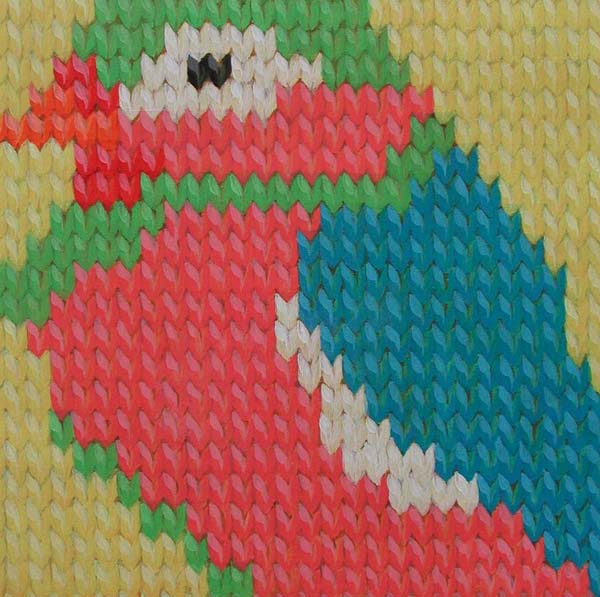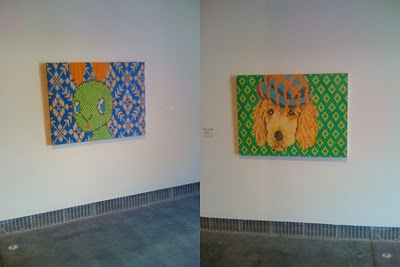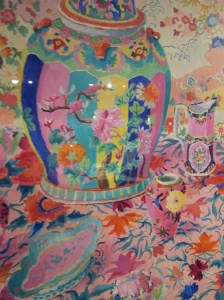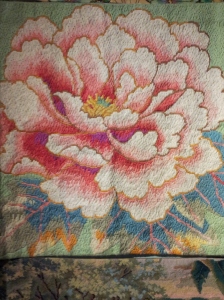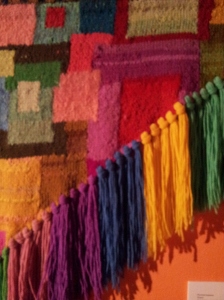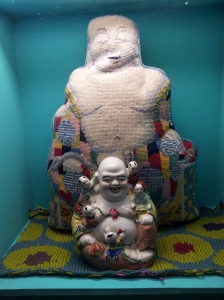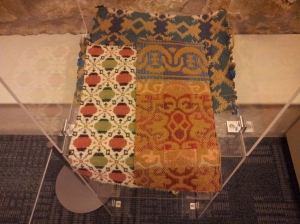http://www.twmuseums.org.uk/sunderland.html
I had a few hours to spare yesterday so I decided to call into my local museum which I have not visited for ages. It is situated on the edge of Mowbray park in the centre of Sunderland and consists of an art gallery, museum, exhibition space and Winter Gardens.
The Winter Gardens is home to over 2000 exotic plants and trees, a couple of which I took photos of, I went for the bizarre and the pretty!
This is a type of fern, and caught my attention due to the size of it plus the texture on the bottom with the ferns popping out of the top.

The fish are big! It was very relaxing sitting and watching them. They was an attractive mix colours of oranges, yellows and blacks.

Not sure what this flower is, there was no museum staff around to ask, but I liked the petals, the mixture of colour and texture and the prominent stamens added a unusual twist to it.

This was my favourite. Apart from looking like something out of Dr Who, I thought it would be great to sketch due to the straight lines, textured bark and its position amongst the green of the tropical plants.

I plan to go back into the Winter Gardens when I have more time as I felt there was lots of interesting sketching opportunities there.
After a quick cup of coffee into the art gallery part where there is a mixture of oil on canvas paintings by several 19th century artists, none of which I had heard of. I was not allowed to take any pictures even though I showed them my student card, and there were no postcards or other information available about the paintings on show, so it was disappointing to come away empty-handed.
Although, none of the paintings where by artists on the OCA study list I made some notes on the paintings that caught my eye.
It was a novel experience for me examining in detail the paintings. I cannot comment on technique, so I concentrated on looking at the painting itself to see what is was ‘saying to me’.
The first picture was called the Bolton Court in Olden Times (circa 1834) by Edwin Henry Landseer (1802-1873).
My Musings
The picture depicted two ladies discussing what looked like the products of a hunt. Looking at the costumes worn it could be King Charles I and II period – around the 1600s. There are plenty of animals in the scene, the two dead stags, the hunting dogs and the two hooded hawks. The women are obviously discussing the kill, next to a gentleman who I would presume is the huntsmen, and there is a young boy kneeling offering a knife to the women. Not sure what this signifies.
The Experts Views However, after doing some online research I found the following:-
(http://www.bridgemanart.com/asset/429312/Landseer-Sir-Edwin-1802-73/Bolton-Court-in-Olden-Times-oil-on-canvas)
“One of this country’s most successful nineteenth century painters, Landseer is best known for his skill in portraying animals – based on detailed anatomical study and a deep understanding of their habits and character. The subject of this painting is set in the early sixteenth century, and shows some family ritual: a lady of the household is being presented with a knife after the return of a hunting party whose ‘bag’ is displayed before her. the painting was exhibited at the Royal Academy in 1838”

The Victorian public were delighted by his work, and he was popular with Queen Victoria and did portraits of her pet dogs as well as later, portraits of her children, always with a dog though.
However, later he fell out of fashion as the public grew tired of his tendancyto” humanize his subjects to tell a sentimental story or point a moral”.
Landeer also painted portraits and historical scenes. He later was commissioned to make 4 bronze lions for the base of Nelson’s Column in Trafalgar Square, London.
http://www.bbc.co.uk/arts/yourpaintings/artists/edwin-henry-land
The second painting I looked at was ‘The Sick Boy’ by Joseph Clark (1834 – 1926) , Painted around 1857.

My Musings
The painting depicts an ill child, surrounded by his family, or his mother, sister and a doctor. The characters ‘ooze’ anxiety, even the little girl by the fire place gives a feeling of concern to the viewer. Childhood illnesses were common in Victorian times as there were no immunizations or antibiotics. Therefore any childhood illness must have sparked fear for their parents. The boy’s flushed cheeks depicts his illness as does the general feeling of his malaise.
I liked the details in the painting, the cat rubbing up against the man’s leg, the dog on the hearth rug and the ornaments on the mantle piece.
The Experts Opinions

“The mother in this scene looks anxiously at the man on the left, who is perhaps the sick boy’s father or the doctor. In Victorian times, even ordinary illnesses could result in death. The room is fairly comfortable, but indicates that the family is not well off. This picture is a fine example of the scenes of everyday life painted by the London artist Joseph Clark. His pictures often featured children”.
http://www.bridgemanart.com/asset/429382/Clark-Joseph-1834-1926/The-Sick-Boy-c.1857-oil-on-canvas

Joseph Clark specialised in depicting domestic genre subjects of a ” tender nature which generally featured children and he also painted a small number of biblical subjects.
“Many Victorian painters sought to demonstrate their social conscience through emphasising in their paintings the importance of family life and Joseph Clark was no exception. Whilst avoiding the overly sentimental style of some of his contemporaries, he frequently chose subjects which sought to remind people of their good fortune in having a caring family at a time when many children grew up as orphans in workhouses”.
Joseph Clark enjoyed considerable success with his paintings and in 1876 he was awarded a medal in Philadelphia for his paintings ‘The Sick Child’ and ‘The Nest’.
http://www.burlington.co.uk/artist-biography/joseph-clark.html
Third Painting – Roker Beach (1865) by William Crosby (1830 – 1910)

My Musings
This painter was one of the leading artists in Sunderland. I had to include this as Roker Beach has played an important part of my childhood, and many a happy time was spent at Roker, although it has changed greatly since the 1800s.
It was difficult to find any other information about the painting and the painter. This image does not do it justice, the sand (nearest the viewer) was painted in a very realistic way and appears very textured when viewing the real painting. While the use of the green ‘mossy’ stones work well and some of these stones are still present today (when the tides goes out). It also includes a family next to the cliffs, so like the other two Victorian paintings I have discussed above once again it shows how important family life was to the Victorians.
I personally find it a calming picture of a local coastal scene.
After a little research I did find this little snippet of a description from the following website: http://www.imagine.org.uk/details/index.php?id=TWCMS:P740
“Roker Beach
Oil on canvas
width: 104.5 cm, height: 60.0 cm
A family group is sitting by the cliffs on a sunny day at Roker Beach, Sunderland. The view looks south towards the mouth of the River Wear and the piers. The tide is out, leaving a wide expanse of sand. This attractive image is one of many coastal views painted by the leading Sunderland artist William Crosby”.
I enjoyed my time at the art gallery and will return to explore when I have more time.
 ,
,


